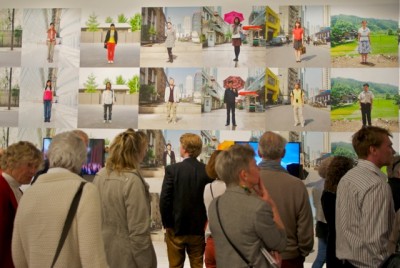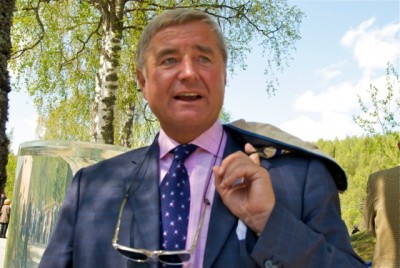SEE THE VIDEO: Government officials stayed away, but hundreds of others lined up on Sunday for the opening of a landmark exhibit at the Kistefos Museum outside Oslo. The exhibit, featuring works by famed Chinese artist and social critic Ai Weiwei, is a coup for Kistefos but perhaps just a bit too controversial for government ministers to attend.

The artist himself couldn’t attend the opening, because he remains in house arrest in China after recently being released from prison. Ai Weiwei has agitated Chinese authorities for years, not least through his blogging and use of social media, and the Chinese government thought it best to rein him in.
Norwegian government officials, who have attended and spoken at Kistefos openings every year since the museum itself opened in the early 1990s, seem to have chosen not to attend. Kistefos officials say they were “duly invited,” but as museum director Egil Eide carefully phrased it, “they didn’t have the time this year.” Diplomatic relations between Norway and China have been frozen since the Norwegian Nobel Committee awarded the Nobel Peace Prize to another Chinese dissident, Liu Xiaobo, in 2010.

“I don’t want to speculate (on the reason), but they haven’t been able to participate this year,” said Christen Sveaas, the Norwegian businessman and philanthropist who founded and financially supports the museum. “After the Nobel Prize, there have been complications. Everybody wants the relationship to normalize, but it will take some time.”
CLICK HERE for video from Kistefos, with Sveaas’ views on Chinese relations.
Meanwhile, Sveaas had no qualms about mounting the Ai Weiwei exhibit, which is widely credited to the initiative of Kistefos’ new chief curator Gerd Elise Mørland. She came up with the idea of featuring Ai Weiwei last fall and tapped into her network to secure an exhibit of his provocative photography that was shown at the Jeu de Paume Museum in Paris last winter. The exhibit is produced in collaboration with the Fotomuseum Winterhur of Switzerland.
Getting it to Jevnaker, the small town northwest of Oslo where the Kistefos Museum is located on the site of an historic forest products plant, marks a breakthrough for Kistefos. Given the sensitive relations between Norway and China at present, Mørland said she thought it was “really brave” of the museum’s board to approve and mount the exhibit. “We like to be brave,” claimed Sveaas.

He stressed that Kistefos simply wants to show the works of “great international artists,” and that Ai Weiwei is among the greatest at present. “Kistefos Museum is not political,” Sveaas said, adding that the politics of artists in their home countries is “irrelevant” to the decision to mount exhibits. Rather, he said, Kistefos concentrates on the art itself, but he allowed that the current exhibit also was “a matter of putting the museum on the map” internationally. There’s no doubt Ai Weiwei’s exhibit at Kistefos will attract international attention.
The museum receives no state support but applied and quickly received funding from the Fritt Ord foundation, a Norwegian organization committed to promoting freedom of expression. Fritt Ord provided NOK 500,000 to back the work of an artist whose own freedom of expression has been severely challenged by Chinese authorities.
Fritt Ord has noted how Ai Weiwei “deliberately confronts social conditions in China and in the world.” The exhibit at Kistefos shows, for example, how historic buildings have been razed and residents uprooted in the name of progress. A startling series of photographs showing Ai dropping a 2,000-year-old Han Dynasty urn is meant to protest how poorly China has taken care of its history. Many of Ai’s photographs are from his famous blog that had an estimated 17 million readers before the Chinese authorities shut it down three years ago.
There’s another reason Kistefos officials thought it appropriate to show Ai’s art: Kistefos itself was the site of Norway’s first armed labour conflict, involving pay and union representation issues highly relevant in China today. Ai Weiwei is an advocate of democracy and freedom of expression, values most Norwegians routinely rank as among their most important.
“Getting Ai Weiwei to Jevnaker is an exceptional lift, an Olympic effort really,” said museum director Eide. The museum also features historic industrial exhibitions and a large sculpture park (external link) but there was no unveiling of a new sculpture on Sunday. Eide hinted, though, that one would follow later in the season. The Ai Weiwei exhibit runs until October 7.
Views and News from Norway/Nina Berglund
Please support our stories. Readers in Norway can use our donor account. Our international readers can click on our “Donate” button:

